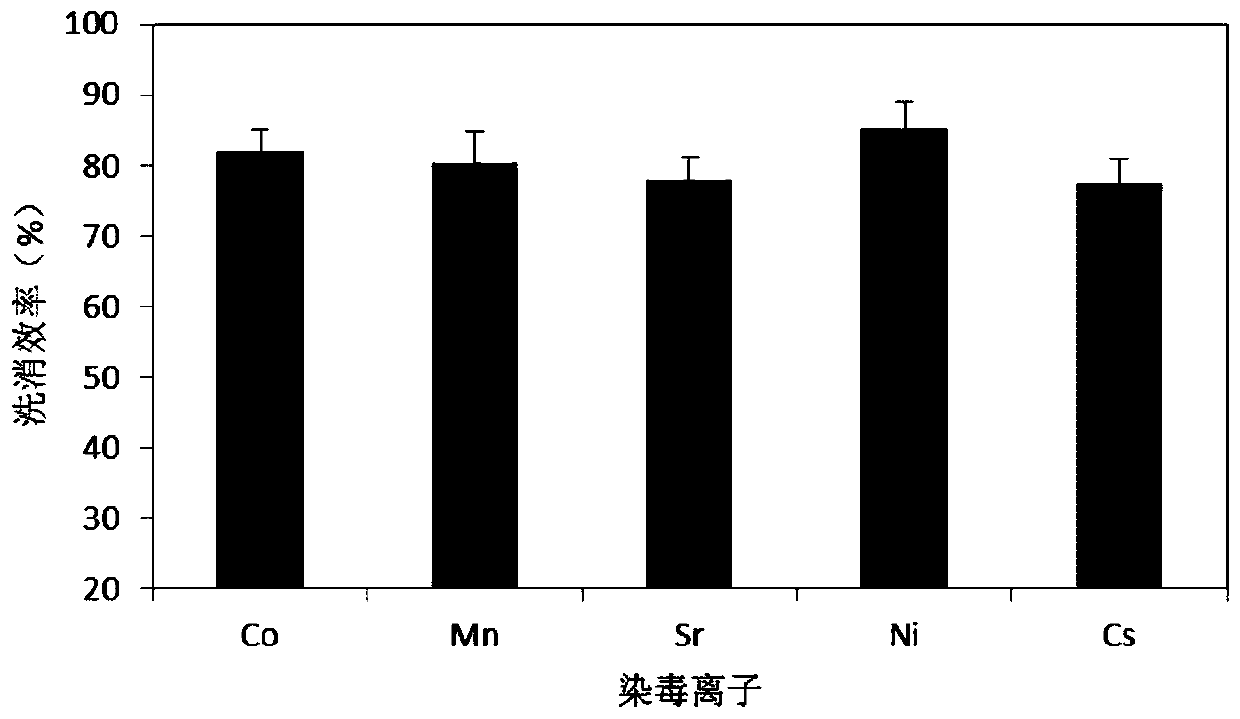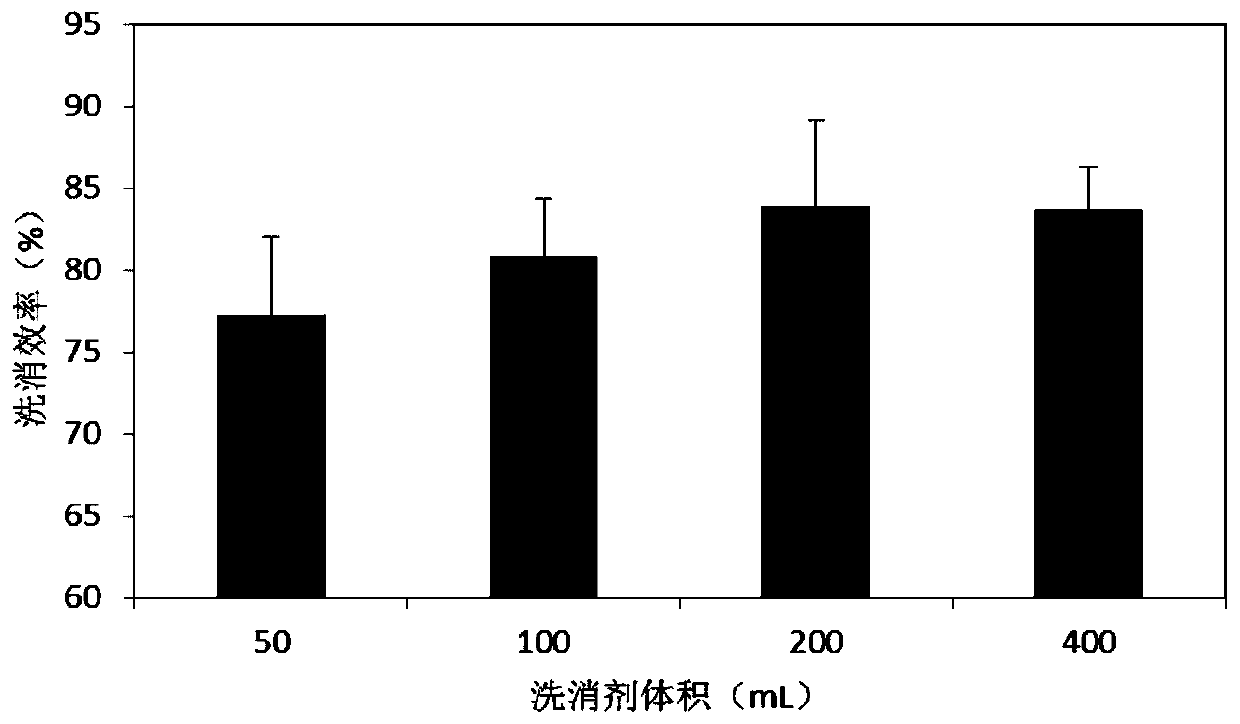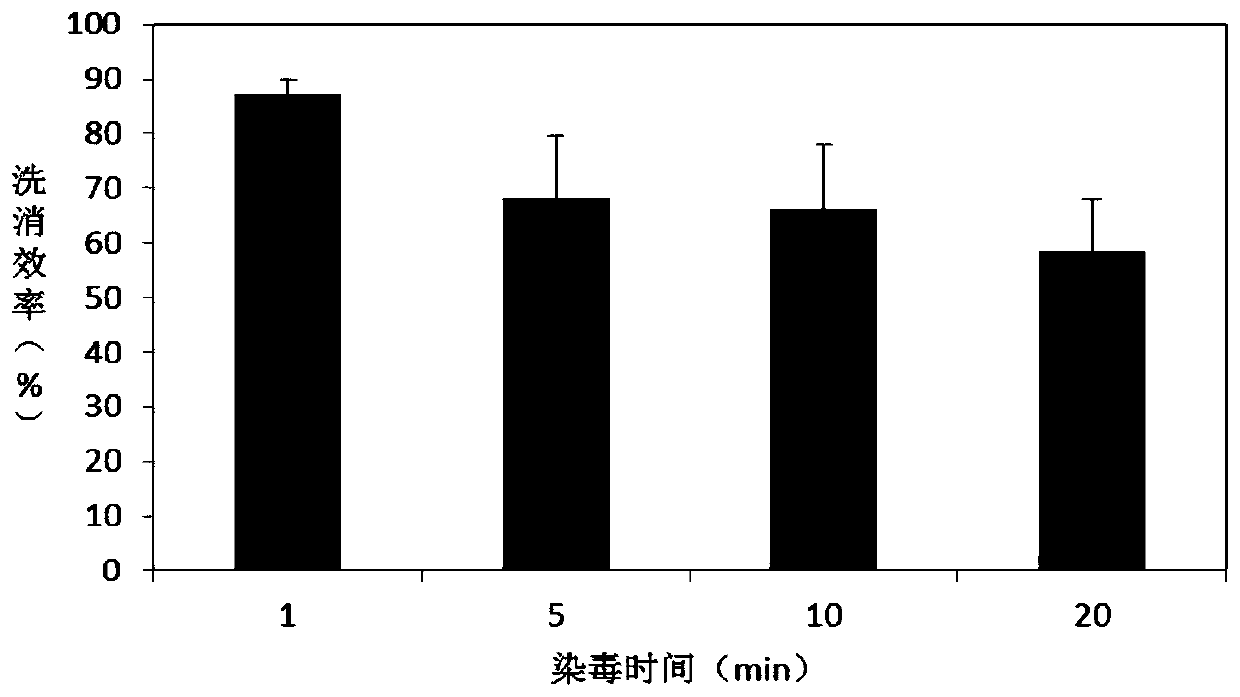Radionuclide pollution decontamination agent and preparation method and application thereof
A radionuclide and decontamination technology, applied in the field of medicine, can solve the problem of low decontamination efficiency of radioactive wounds or can only target certain elements, achieve good healing function, reduce absorption, and improve decontamination ability. Effect
- Summary
- Abstract
- Description
- Claims
- Application Information
AI Technical Summary
Problems solved by technology
Method used
Image
Examples
Embodiment 1
[0028] The formulation optimization of embodiment 1 radioactive pollution decontamination agent
[0029] 1. Reagents and animals
[0030] Disodium ethylenediaminetetraacetic acid (EDTA·Na 2 ), chloral hydrate, sodium alginate, carboxymethyl chitosan, lidocaine hydrochloride, cesium chloride, SD rats.
[0031] 2. Experimental method
[0032] 1. Determination of decontamination efficiency
[0033] Before the experiment, the rats were anesthetized by intraperitoneal injection of 10% chloral hydrate (0.3ml / 100g), and the hair on both sides of the back spine was removed with a shaver, and four holes were symmetrically prepared on the skin on both sides of the spine with a 1cm diameter punch. Wound, the wound is deep to the fascia layer. Infection was started immediately after the wound model was made. Take 100μl of 1000mg / L Cs +The aqueous solution is evenly applied to the wound area as a poisoning solution, and after standing for 5 minutes, take 50ml of decontamination agent...
Embodiment 2
[0047] The preparation of embodiment 2 radioactive contamination wound decontamination agent
[0048] According to the recipe: EDTA·Na 2 : 20%, carboxymethyl chitosan: 0.1%, sodium alginate: 0.2%, lidocaine hydrochloride: 1.0%, accurately weigh each component, and accurately weigh 20% of EDTA·Na 2 Add in pure water, heat in a water bath and add sodium hydroxide to adjust the pH to completely dissolve, accurately weigh 0.1% carboxymethyl chitosan and 0.2% sodium alginate, add pure water and stir to dissolve, then add EDTA Na 2 After mixing the aqueous solution, add 1% lidocaine aqueous solution, and adjust the pH of the mixed solution to 6.9 with hydrochloric acid to obtain a decontamination agent.
Embodiment 3
[0050] Determination of Decontamination Efficiency of Radioactively Contaminated Wound Decontamination Agents on Wounds Contaminated by Different Nuclides
[0051] Before the experiment, the rats were anesthetized by intraperitoneal injection of 10% chloral hydrate (0.3ml / 100g), and the hair on both sides of the back spine was removed with a shaver, and four holes were symmetrically prepared on the skin on both sides of the spine with a 1cm diameter punch. Wound, the wound is deep to the fascia layer. Infection was started immediately after the wound model was made. After preparing the wound for defecation, take 100 μL of the poisoned solution and apply it evenly on the wound area. The poisoned solution is Co 2+ , Mn 2+ 、Sr 2+ 、Ni 2+ 、Cs + The aqueous solution with a concentration of 1000mg / L, let it stand for 5min, take 50ml of the decontaminant prepared in Example 2, and use a disposable wound pulse flushing system to flush the poisoned wound once, with a flow rate of 1...
PUM
 Login to View More
Login to View More Abstract
Description
Claims
Application Information
 Login to View More
Login to View More - R&D
- Intellectual Property
- Life Sciences
- Materials
- Tech Scout
- Unparalleled Data Quality
- Higher Quality Content
- 60% Fewer Hallucinations
Browse by: Latest US Patents, China's latest patents, Technical Efficacy Thesaurus, Application Domain, Technology Topic, Popular Technical Reports.
© 2025 PatSnap. All rights reserved.Legal|Privacy policy|Modern Slavery Act Transparency Statement|Sitemap|About US| Contact US: help@patsnap.com



